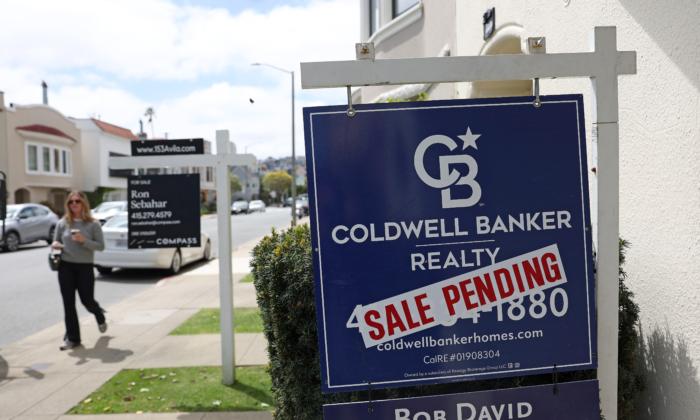The U.S. housing market has witnessed a slowdown in activity this year because of tighter supply, according to Thomas Barkin, president of the Federal Reserve Bank of Richmond.
Speaking at a Real Estate Roundtable event in Washington, Mr. Barkin noted that home prices have remained strong amid an environment of higher interest rates and slowing sales volumes.
But the industry has been pining for lower rates, he noted.
“You may know that the last time the Fed tackled high inflation, in the ’80s, homebuilders sent [then-Fed Chairman] Paul Volcker two-by-fours inscribed with the message: Lower interest rates,” Mr. Barkin said.
“Further rate increases and a persistently wide spread pose broader risks to economic growth, heightening the likelihood and magnitude of a recession,” the letter reads.
Housing Affordability Challenges
With supply failing to keep up with demand and mortgage rates marching toward 8 percent, housing affordability deteriorated to a fresh all-time low in August, new industry data show.NAR figures highlighted that the typical family needed to earn $107,232 in August to qualify for a mortgage, based on a 20 percent downpayment. It was the third consecutive month of a six-figure headline number.
The organization reported that the average family spent more than one-quarter (27 percent) of their income on annual mortgage payments.
Housing inventories have worsened over the past year. Existing home sales have declined in 13 of the past 15 months, including a 0.7 percent drop in August.
The challenge faced by the U.S. real estate market today is that homeowners aren’t erecting for-sale signs on their front lawns.
When the Federal Reserve slashed interest rates to nearly zero during the COVID-19 pandemic, mortgage rates crashed to their lowest levels on record.

The mix of high mortgages and prices has prevented the new generation of homebuyers from achieving the American dream of homeownership. However, anyone who purchased a home before the U.S. central bank launched its quantitative tightening cycle is in good shape: a 2 to 4 percent 30-year mortgage rate and a residential property that has accumulated plenty of equity.
Ultimately, it could be a tale of two housing market participants.
Andy Walden, the ICE vice president of enterprise research, warned that incomes would have to spike by 55 percent or home prices would have to collapse by 35 percent to restore affordability.
Mortgage Rates Now and Beyond
The National Association of Home Builders (NAHB)/Wells Fargo Housing Market Index found that builder confidence in the real estate market for newly constructed single-family homes slumped for the third consecutive month in October. They’re seeing lower levels of buyer traffic as some buyers, including the younger families, are “priced out of the market because of higher interest rates,” according to NAHB Chairman Alicia Huey, a custom home builder and developer.“Higher rates are also increasing the cost and availability of builder development and construction loans, which harms supply and contributes to lower housing affordability,” Ms. Huey said.

NAHB Chief Economist Robert Dietz noted that one of the primary tools available to solve the housing affordability crisis is contributing “attainable, affordable supply.”
“Boosting housing production would help reduce the shelter inflation component that was responsible for more than half of the overall Consumer Price Index increase in September and aid the Fed’s mission to bring inflation back down to 2 percent,” he said. “However, uncertainty regarding monetary policy is contributing to affordability challenges in the market.”
Treasury yields have been accelerating, with the two-, 10-, and 30-year yields touching their highest levels in 16 years. The volatility in the bond market has played a critical role in the housing market because mortgage lenders tie their interest rates closely to Treasury bond rates.
“In many ways, the housing market experienced four years of business in a two-year period between mid-2020 and mid-2022,” said Doug Duncan, Fannie Mae senior vice president and chief economist. “With ongoing affordability constraints and rising mortgage rates, much of that activity has essentially been given back. We expect the higher mortgage rate environment to continue to dampen housing activity and further complicate housing affordability into 2024.”
The FOMC will hold its next two-day policy meeting on Oct. 31 and Nov. 1.







